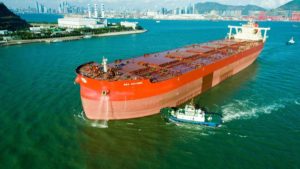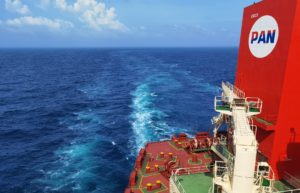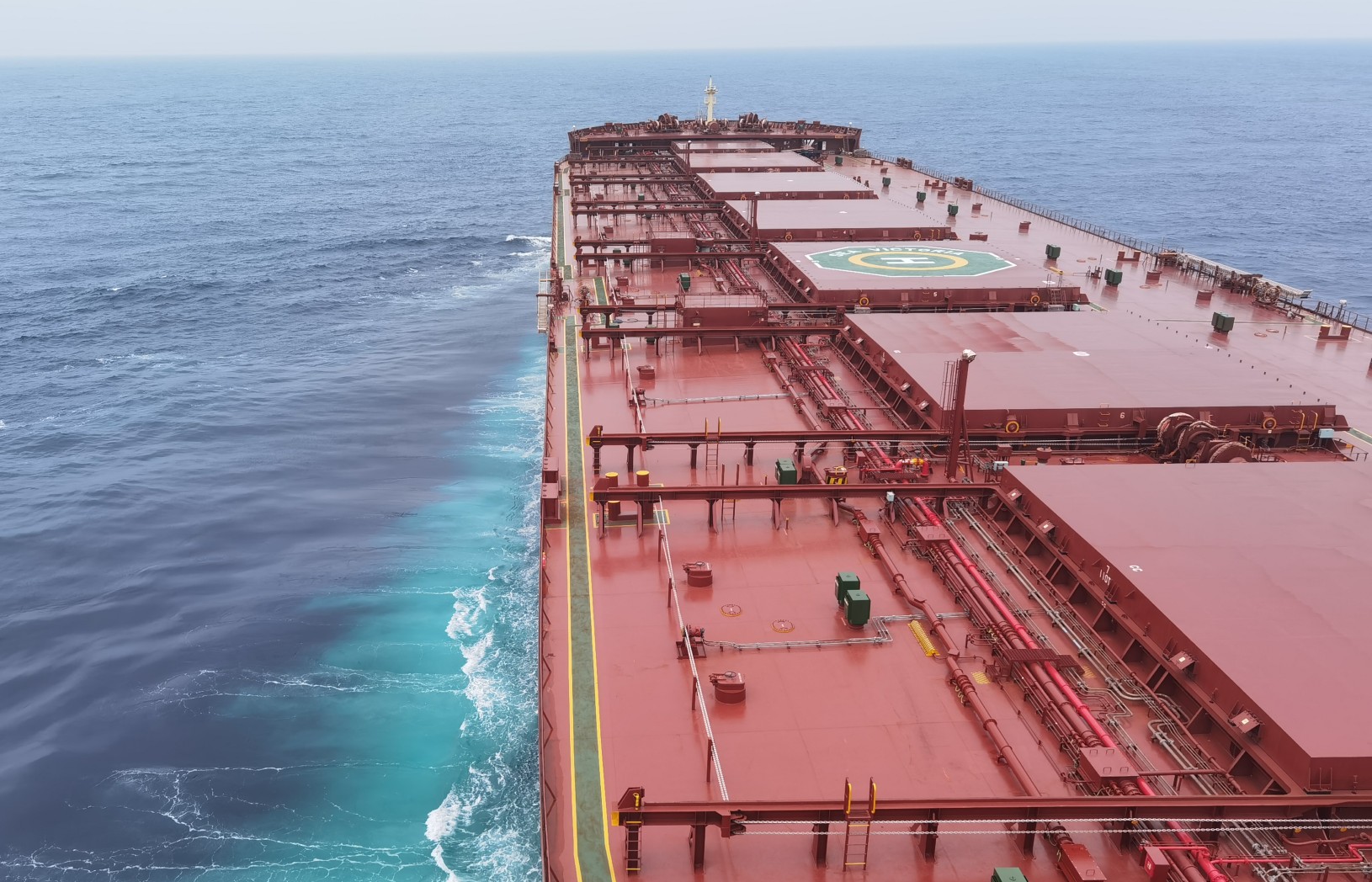Mining giant’s multi-vessel bet on air lubrication and rotor sails on its giant ore carriers are part of a much bigger strategy that includes a multi-fuel storage system.
Vale, the Brazilian mining giant, has big plans for the fleet of iron ore carriers it operates and says it’s is showing shipping how shippers are part of the industry transition.
The company, one of the biggest iron ore miners and shippers in the world, operates a fleet of around 115 giant ore carriers. Vale has made public its commitments to reduce its impact on the environment, both with its mining as well as transportation and logistics businesses, and this, it says, includes its commitments to making the giant vessels it uses to carry thousands of millions of ore, cleaner.
The processes has been underway for a while, with its latest fleet of slightly smaller vessels (though still larger than the standard capsize) being built with the ability to have systems installed to allow it to run off LNG as well as diesel.

Two of these ships have two new fuel saving (and by that read emissions reducing) technologies on board. On one vessel are five rotor sails, sometimes called flettner rotors named after their German inventor, which use wind to create thrust and thus enable the ship’s engines to be powered lower to get the same speed. On the other an air lubrication system has been installed. This system consists of a series of air compressors that push a blanket of air bubbles under the ships hull to reduce water/ship friction and make the vessel pass through the water more readily, again resulting in the ship needing less power from its main diesel-fuelled engine to get the same speed.
Neither technology is new, and have been featured extensively on Fathom.World, over the years, but their use on giant ore carriers in international trade is certainly new and shows how these technologies are gaining in maturity, size and acceptance.
Pushed or pulled
Vale’s environmental position, where it is investing in changes to the vessels it has on long term charter, or under contracts of affreightment, shows how shippers are influencing shipping. To some extent it is about cutting fuel bills, on others about remaining compliant, but increasingly also about stakeholder image. The introduction in a couple of years of the EEXI (energy efficiency existing ship index) and CII (carbon intensity indicator) will no doubt be a stimulus for technology installation (see link).

For UK-based Silverstream Technologies, the company behind the air lubrication system on Vale’s Sea Victoria, the pending CII and EEXI rules will be an impetus for which they are preparing for with staff hires and increased discussions with ship operators.
Vale for example will spend the next year evaluating the performance of the air lubrication system and make a decision about rolling out installation to other vessels in the fleet. That’s good news for Silverstream CEO Noah Silberschmidt who says the company has now won 59 orders (newbuildings and retrofits) since it installed and tested its first unit on the product tanker Amelienborg in 2014. The range of vessels includes ro-pax and ro-ro vessels, cruise vessels, tankers, gas carriers, and now a large bulk carrier.
A Shipper's influence
Vale, Rio Tinto, Cargill and BHP are the amongst the biggest dry bulk shippers in the world, trading in ore, grain and other major commodities. All have made public environmental commitments regarding sustainability and environmental impact, and all include shipping in their plans to differing degrees.
For Vale this is is collated into its Ecoshipping project, and the air lubrication system on Sea Victoria and the wind assist rotors on Sea Zhousan are part of this. So are plans, according to Rodrigo Bermelho, Vales shipping technical manager, for multi-fuel fuel tanks on their ships.
From lng and beyond - the multi-fuel fuel tank
 Bermelho says that the company’s Ecoshipping research and development programme started four years ago with economies of scale, moving now towards energy efficiencies and then transitioning to alternative fuels. Big ships may need big investments, and Bermhelo confirms that the process of selecting Silverstream, working with them and other stakeholders to analyze the systems possibilities, assess the savings, and design and install the system took two years.
Bermelho says that the company’s Ecoshipping research and development programme started four years ago with economies of scale, moving now towards energy efficiencies and then transitioning to alternative fuels. Big ships may need big investments, and Bermhelo confirms that the process of selecting Silverstream, working with them and other stakeholders to analyze the systems possibilities, assess the savings, and design and install the system took two years.
Sea Victoria may be a newbuilding but was competed at one yard before being moved to another for the air lubrication system to be retrofitted. Ten compressors in the forward bosun’s store push a stream of air through specially designed openings under the hull to form the carpet of air.

But Vale’s Ecoshipping program goes beyond air lubrication and rotor sails says Bermhelo. The latest vessels built for Vale have been built “LNG Ready” meaning that while they have been built and delivered with diesel fuel, they can be modified with the installation of LNG fuel tanks and fuel system to run off liquid natural gas.
But now Vale is not staying with this option, says Bermhelo. Another part of the Ecoshipping option is investing into developing a new multi-fuel tank.
“So we have a project for a multi fuel tank, one tank that could store ammonia, methanol, LNG. This is an important piece of our strategy,” he says pointing to the need for these young super large drybulk vessels to have the flexibility for whichever fuel may be nest suited for their trade.
Meanwhile even as these vessels move to other fuels, they will still benefit from having efficiencies as alternative fuels are likely to be more expensive. Therefore the air lubrication system and the rotor sail system will be piloted for a year and then rolled out across some of the other vessels in Vale’s fleet if performance meets expectations.































